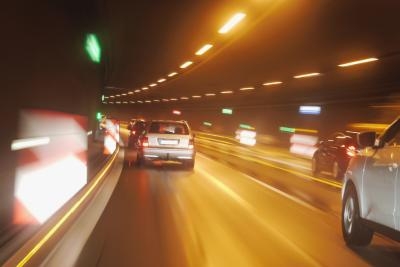
The relationship between speed, distance and time is something most people learn as children. Working out how fast a vehicle was traveling is simply an applied version of this. If you know the distance traveled and the time taken, it is a simple calculation to work out the speed. If you know less information than this, however, it is still possible to use other clues to determine the speed of a vehicle.
Find out the distance traveled. If you wish to work out how fast a plane journey was, for example, by measuring the distance between airports, it is possible to determine distance, particularly if a flight plan map is used. Similarly, by plotting a car journey on a map using a piece of string, accurate distances can be found.
Find out the time taken. The shorter the journey, the more important the accuracy. If the journey took several hours, calculations to the nearest 10-minute increment are usually acceptable. For shorter journeys, however, more accurate timing is needed.
Divide the distance traveled by the time taken. For example, if you traveled 1,500 miles in three hours, you divide 1,500 by three to work out a speed of 500 miles per hour. By adjusting the units used, different speed calculations can be found.
Ensure that the units are the most appropriate for the speed traveled. For example, while miles per hour is an acceptable unit for planes, for a sprinter this would be less so. To convert miles per hours into feet per second, multiply the speed in miles per hour by 1.5. A speed of 20 miles per hour is approximately 30 feet per second.
Use other data to calculate the speed if the distance or time is not known. A major way used to investigate crimes is braking distance. For example, according to British government figures, a car traveling at 70 mph will take 313 feet to stop. These calculations, though rough, can be used to gauge the how fast a vehicle was traveling.